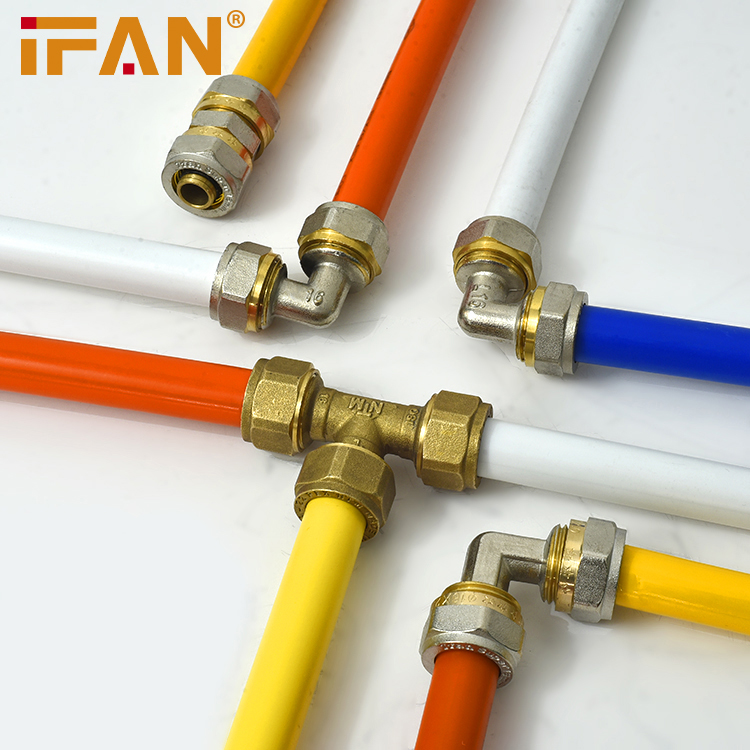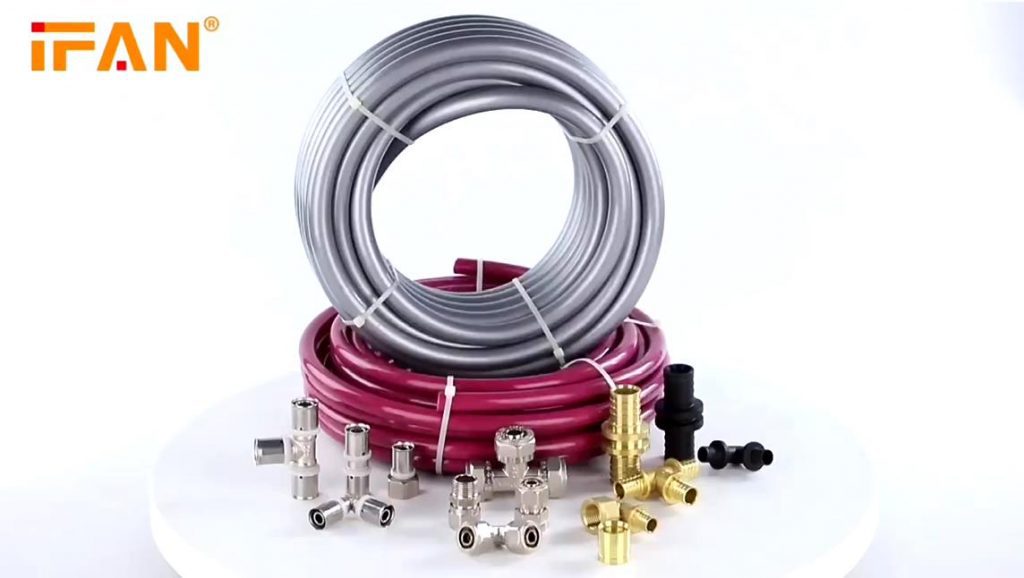Detailed Introduction of PEX Pipe
PEX pipe, also known as cross-linked polyethylene pipe, is made of polyethylene material. The linear molecular structure of polyethylene is changed into a three-dimensional network structure through physical and chemical methods so that the performance of polyethylene is improved. This is our Facebook Website:www.facebook.com,the following IFAN will introduce the information about PEX from various aspects.
Production Process
Raw material pretreatment + auxiliary preparation → mixing → melt graft extrusion → pipe forming → cross-linking → inspection and packaging → finished product.
The role and purpose of additives
The cross-linking agent is to crack the original linear molecular structure to form a graft material, thereby forming a three-dimensional network structure. The role of antioxidants and color particles is to improve the corrosion resistance of PEX pipes, prevent physical changes from long-term sunlight exposure, and resist long-term ultraviolet erosion, thereby prolonging its service life.
Application field
- Indoor water supply pipes, hot water pipes, and pure water delivery pipes.
- Liquid food transportation pipelines in the food industry.
- Plumbing heating system, central air-conditioning piping system, ground radiant heating system, solar water heater system, etc.
- telecommunications, electrical piping.
- electroplating, petroleum, and chemical plant pipeline system.

Design Guidelines
Piping layout and laying
(1) First, the location and direction of the piping should be determined according to the structure and process layout requirements of the building.
(2) The pipeline should be hidden or embedded in the ceiling, pipe hole, and pipe well.
(3) When the pipeline is laid on the overhead floor or in the whole pouring layer of the floor, it is advisable to install rigid PVC corrugated pipes.
(4) When the pipeline passes through the floor and roof, fixed support points should be set at the passing part, and strict waterproof measures should be taken. When passing through walls, beams, and columns, casings should be set.
(5) The pipeline should not pass through the settlement joints and expansion joints of the building. When it has to pass through, anti-settlement and expansion measures should be set at the passing parts.
(6) Anti-settling measures should be taken when the outdoor pipeline passes through the concrete wall of the basement.
(7) The pipeline passes through the water tank of the pool, and the pipe section between the inlet and outlet pipes and the valve shall be made of corrosion-resistant metal pipes.
Pipe insulation
(1) For outdoor exposed water supply pipelines, thermal insulation measures shall be taken according to the national technical regulations for antifreeze and thermal insulation engineering of water supply pipelines.
(2) The hot water pipe is laid in the ceiling pipe well, the pipe hole, and the open pipe section, and thermal insulation measures should be taken.
(3) The distance between the pipe and the heat source is generally not less than 1m, and the distance between the indoor open pipe and the household stove should not be less than 0.4m.
Residential Plumbing Divider Setup
(1) For the hot and cold water pipes in the residence, when the pipe diameter is smaller than De25, centralized water distributors should be set up, and the shortest distance to each water distribution point.
(2) The water distributor should be equipped with a water distributor box, and the height of its center from the ground should be 0.3m for the cold water pipe and 0.45m for the hot water pipe.
(3) Corrosion-resistant materials should be used for the material of the water distributor, and copper valves should be installed at the ends of the inlet and outlet pipes.
Construction Guide
Preparation
(1) The design and construction drawings and other technical documents are complete and have been reviewed.
(2) The construction organization design has been determined, and the technical disclosure has been completed to understand the laying method.
(3) Before the installation of the pipeline, the appearance quality of the material and the fitting tolerance of the pipe fittings should be carefully checked, and the contaminated pipes and the dirt in the pipe fittings should be thoroughly cleaned.
(4) The construction personnel should understand the building structure form, ceiling height, and the number of pipes in the pipe well, determine the pipe position, and should master the connection technology of pipe fittings and other basic operation points.

Work with buildings
(1) When installing small-diameter pipelines, the bendability of the pipeline should be used, and no or fewer pipeline connectors should be installed as much as possible. The minimum bending radius is 8De when the pipe is not equipped with connectors.
(2) When the pipeline passes through the floor slab, the roof concrete wall panel, and the pool wall, the reserved holes, pre-embedded casings or pipe fittings shall be matched with the civil construction according to the design requirements. The reserved aperture should be larger than the outer diameter of the pipe by 70mm, and the inner diameter of the embedded casing should not be larger than the outer diameter of the pipe by 50mm.
(3) When the pipeline passes through the roof floor, strict anti-leakage measures should be taken.
(4) The wall-mounted pipeline should be reserved or drilled in accordance with the civil construction at certain positions. The distance between the groove wall and the outer wall of the pipe should not be less than 10mm, the depth of the groove should not be less than 5mm between the outer wall of the pipeline and the rough wall, and the groove should be neat and level.
Pipe support
(1) General support and fixed support are provided for pipeline risers and horizontal pipes.
(2) The fixed support should be made of steel and should be located near the pipe fittings and pipelines; the main pipe part at the branch of the pipeline system.
(3) The expansion and contraction of the pipeline should be compensated by the bending of the pipeline, and the length of the cantilever end should not be greater than the length of the calculated pipe section.
(4) For straight pipelines laid openly, the expansion joints should be set between two fixed support points and meet the pressure requirements.
(5) The pipeline passing through the wall is a general support point, and the space between the casing or the hole should be filled with soft fillers.
(6) After the installation of the pipeline, the pipe plug should be used for plugging, and the pressure resistance performance of the plugging should meet the pressure test requirements of the pipeline.
Pipe insulation
For thermal insulation of hot and cold water pipes, the basic material should be a single-sided open high-foamed polyethylene tube shell, and the thickness should not be less than 15mm. After the insulation material is wrapped, the cold water pipe on the roof should be wrapped with two layers of thermal insulation layer with a width of 100-120mm and a thickness of 0.22mm for the hot water pipe, which should be constructed according to the design requirements. Black polyvinyl chloride film, the outer surface of the protective layer is fastened with 1mm plastic-impregnated iron wire, and the spacing is 400-450mm.
Pipeline pressure test
After the pipeline is installed, a water pressure test should be carried out. The test pressure is 1.5 times the working pressure of the pipeline system, but not less than 0.60MPa. The pressure on the system should be gradually increased. Whether there is water leakage at the joint, and the pressure drop does not exceed 0.05MPa, it is qualified.

